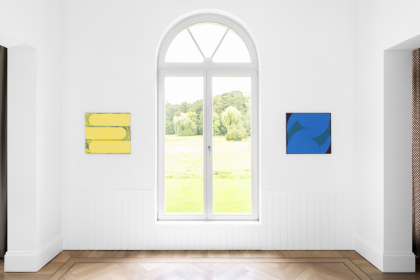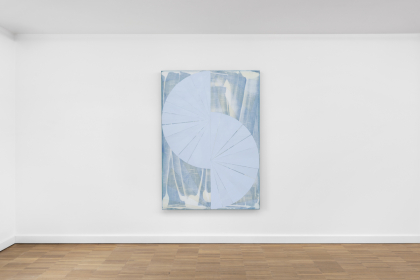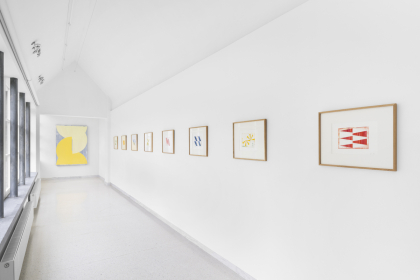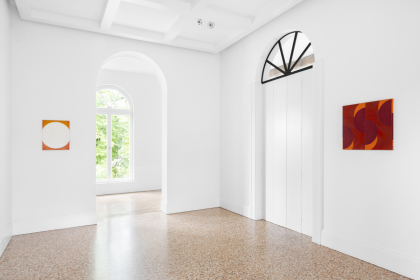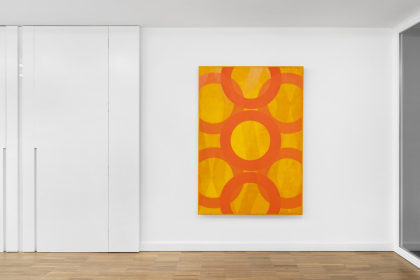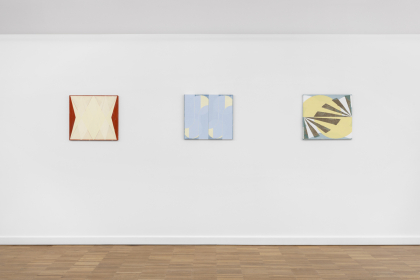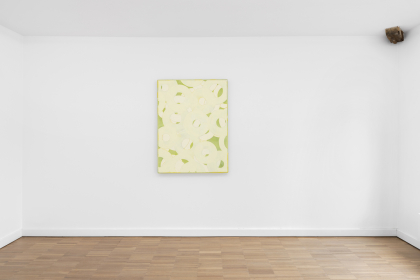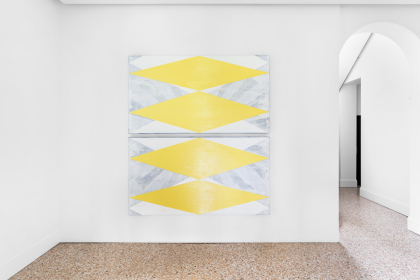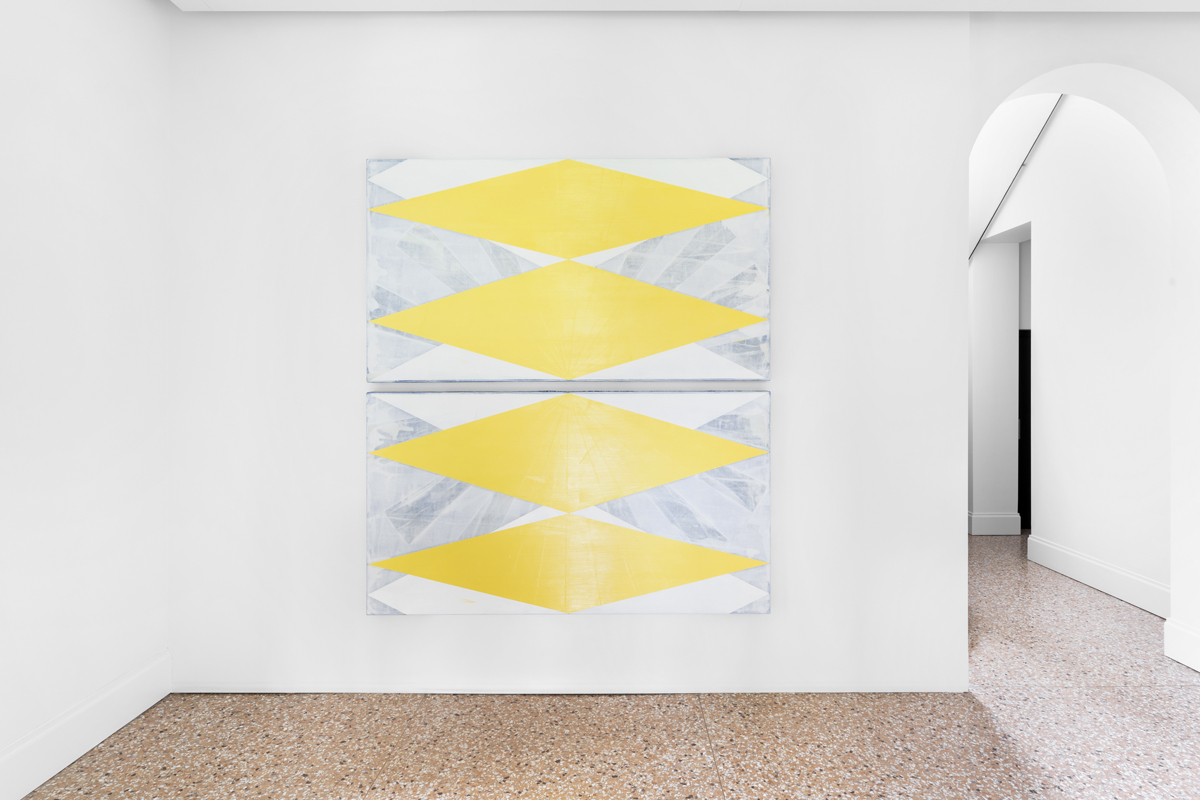
COLOUR AS A BODY
Time is a precious commodity. Time is also what Clara Brörmann's paintings need in order to unfold. Her abstract images seem simple, but open up like a fan of complexity as the viewer dives into the layered surface.
Brörmann works with patience. Each painting contains a period of time. Her works are composed of layers of paint, which she removes and repaints; a process she repeats until the forms are alive and the work is finished. The surface we see is therefore made up of layers of memory; a skin as weathered and alive as a human's, bearing scars of experiences.
Contrary to what might be expected of painting, Brörmann does not think in merely two dimensions. The painting is a space and a matter. She almost sculpts with colour. The texture and materiality of painting is what makes the surface sizzle. She does not even consider it impossible for a painting to unlock a fourth dimension. If not in painting, where else? "But, after all, the aim of art is to create space - space that is not compromised by decoration or illustration, space within which the subjects of painting can live," Frank Stella is reported to have said.
In 1810, Johann Wolfgang Goethe was one of the first to write a theory of colours. He starts from his direct observations and describes what he experiences, from his perception to his feelings. Using light and dark as basic terms, he describes the relationships and shades between colours: how they can intensify or flatten each other, how one colour carries more light than another, how one is more transparent than another. In a world where we consume an extreme amount of images every day - coming to us through a virtual world, on screens without any texture or depth - talking about classical aspects of painting has a new pertinence. What does the making of an (abstract) image mean? What do the layers of paint hide, which we not only see but can also feel in the presence of the image? And also: how do we look at colour?
When there is a sudden change in light or illumination, such as when stepping outside into sunlight from a darker room, our eyes have to adjust. The dilation or narrowing of our pupil is almost palpably slow and colours develop slowly in our field of vision. Our perception takes a while to adjust to the light situation. There is a similar contrast between our habituation to screens on the one hand and looking at paintings like Brörmann's on the other. Her colours have much more volume, stored a different light, than that cold, blue light we have become accustomed to.
Brörmann's work takes place in the pictorial space of painting itself and is a ceaseless investigation into what it means to paint. Colour and light are two key aspects in this. The series of works on paper is entitled Georgian Balcony, after its place of origin. In Georgia (where Brörmann has family) light and thus colours function very differently.
The title of the new series of canvases Körper aus Farbe implies the consideration of colours as bodies, as physical presences, and thus also the possibility of dissecting, deconstructing and analysing them. The overarching title Anatomy of Colour - as the title of the exhibition - reflects well how Brörmann wants to scrutinise the construction of colours. She does this not in theory and reason, but in an empirical way, in the paint itself, in the matter, in practice. In the past, she has been called an archaeologist. But although her building up and down layers of paint has something to do with tracing a history, she does not work with dead matter: her colour and paint are very much alive.
Colours can be an autonomous body, but also have a certain transcendence that can perhaps only be conveyed in painting. Indeed, in their mutual relationships - in their negative and positive space, in their mass and matter - they also transmit an energy from the artist to the viewer; a silent but present communication. What grabs our attention is an absorbing and layered relationship of colours, but what holds our gaze is the energy with which the work is charged.
Tamara Beheydt

